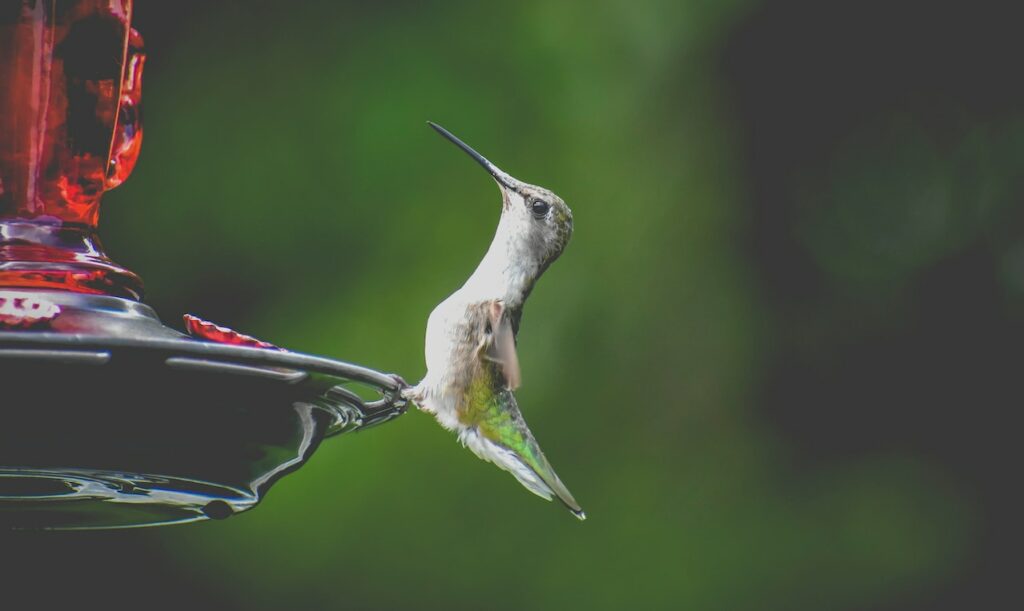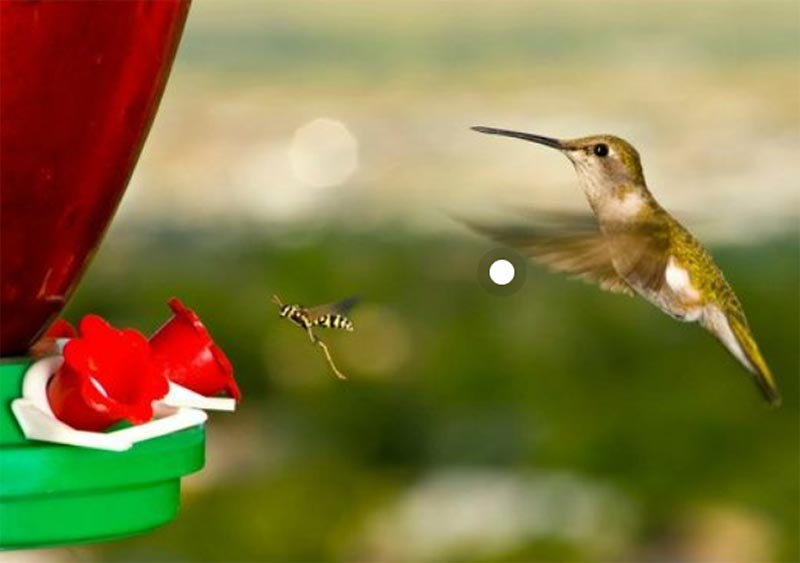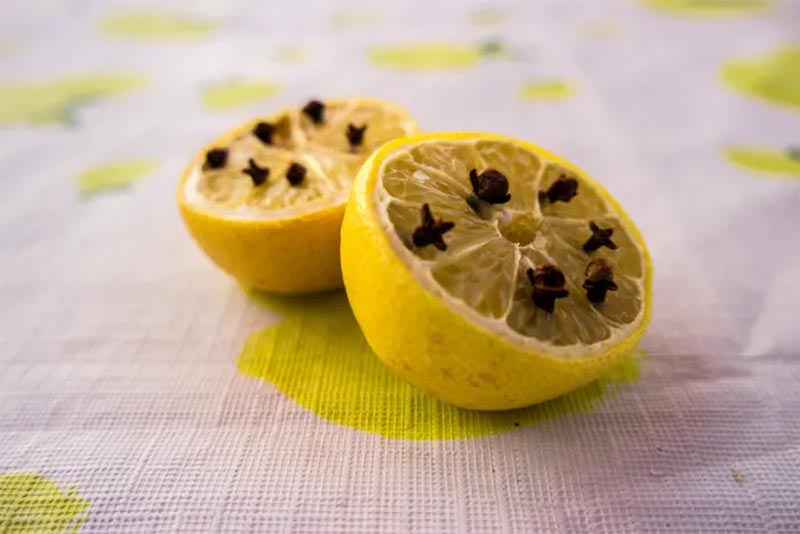3 DIY Bee Guards for Hummingbird Feeders You Can Make Today (With Pictures)
-

- Last updated:

Nearly any bird makes a welcome sight in the backyard, but few are as exciting or prized as hummingbirds. These tiny birds are uniquely graceful, remarkably agile, and as good for the garden as any creature. They are beneficial pollinators and can even protect your plants by eating ants, aphids, and other pests.
Of course, bugs don’t entice hummingbirds like nectar, so hanging a feeder is a surefire way to make them a staple in your backyard.
Unfortunately, bees and wasps also won’t hesitate to make themselves at home around a nectar feeder. And while hummingbirds can share with a small group, it doesn’t take much for a swarm to crowd out your feathered friends.
To keep unwanted nuisances at bay, we’ll show you three DIY bee guards you can use for your hummingbird feeders today!
The 3 DIY Bee Guards for Hummingbird Feeders
1. DIY Mesh Bee Guard by Bill Tracy
- Mesh fruit bag cut to cover holes squares
- Glue
- Q-tip
The problem with most hummingbird feeders is the holes. They’re a comfortable size for hummingbird beaks but also wide enough for wasps, bees, ants, and other small insects to slip through.
You can buy bee guard inserts to narrow the openings to the feeder, but a cheaper and faster solution is to make your own with a few simple tools.
These mesh hole covers are permanent DIY bee guards, requiring nothing more than some rigid netting and non-toxic glue. By applying them to the underside of the feeder holes, you conceal the guards for a seamless look.
Hummingbirds have plenty of space to fit their tongue and feed through these covers. Meanwhile, invading bees and wasps may be confused about why they can’t get in before moving on to other food sources.
2. DIY Mint Deterrent by ThriftyFun

- Mint extract
- Q-tip
If you don’t feel like getting crafty, one of the simplest ways to improve the bee-repellency of your hummingbird feeder is to add mint extract.
According to this tip, using a Q-tip to dab peppermint extract around the feeder’s ports will selectively deter pests. You can also try rubbing mint leaves directly on the feeder. Hummingbirds don’t mind the scent, but wasps and bees try to stay far away.
Unlike the mesh bee guard, a mint extract is not a permanent fix for your hummingbird feeder. You will need to reapply it regularly, especially after it rains. Planting peppermint around the feeder is another option that could save you from regular reapplications.
3. DIY Lemon and Clove Repellent from Totally the Bomb

- Half a lemon
- Whole cloves
Another simple DIY hummingbird feeder guard is a lemon and clove bee repellent. As with peppermint oil, hummingbirds don’t mind the citrus-clove aroma, but bees and wasps can’t stand it.
Press several whole cloves into the flesh of half a lemon, and position it on a plate near the feeder. It is another temporary solution, as the lemon will need regular replacements. When paired with considerate preventative efforts, it could be all you need to keep stinging pests away from your hummingbird feeders.
Tips for Keeping Bees Out of Your Hummingbird Feeders
With an effective DIY bee guard or repellent, bees, and wasps will leave your hummingbird feeder alone and open for the intended audience. Before opting for a DIY or bee-blocking product, a few thoughtful practices can often take care of the problem.
Start by using a dish feeder. Bottle feeders continuously draw nectar to the feeding port, giving bees and wasps easy access. Dish feeders are only accessible from the top. As the nectar decreases, it drops further away from the holes. Hummingbirds can still reach it, but bees and wasps won’t have any luck when a guard is in place.
- Keep feeders in the shade to discourage sun-loving bees from getting comfortable
- Move feeders frequently to confuse bees and wasps
- Use red colors on your feeder to attract hummingbirds
- Avoid using yellow, as it tends to attract bees
- Plant flowers in the sun for bees so they will leave the feeders alone
- Provide a separate bowl of sugar water for bees
- Patch any leaks in the feeder and clean it frequently
- Place fake wasp nests to keep real wasps away
If wasps and bees are recurring issues around your home, you may also want to take more aggressive steps to eradicate them.
You can attempt to spray wasp nests from a distance or take the safer route by hiring an exterminator. If you suspect you’re dealing with honeybees, reach out to an experienced beekeeper to safely remove them.
Conclusion
Bees and wasps can quickly become a headache around the hummingbird feeder, but they can just as easily be kept away from it.
In many cases, a well-positioned red dish feeder is enough to keep stinging pests at bay. When you need a little extra help, these DIY bee guards are quick solutions to ensure hummingbirds feel safe and welcome around your yard.
Featured Image Credit: chris-f, Pexels
Contents


